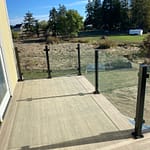How to Calculate Square Footage
Calculate Square Footage Basics
Square footage is a metric used to quantify the area of a space, expressed in square feet. To understand this concept, it’s helpful to visualize one square foot as a square where each side measures exactly one foot in length. This unit of measurement is particularly useful for calculating the total area of various surfaces, such as floors, walls, or any flat surface.
For Irregular Shapes
To calculate square footage for irregular shapes, follow these steps:
Divide the Shape: Break the irregular shape into smaller, regular shapes like rectangles, squares, or triangles. For example, if you have an L-shaped room, divide it into a large rectangle and a smaller rectangle or triangle.
Measure Each Section: Measure the dimensions of each smaller shape. For rectangles and squares, measure the length and width. For triangles, measure the base and height.
Rectangles and Squares: For these shapes, measure the length and width with a tape measure or ruler. Ensure the measurements are taken at the widest points and are straight. For a rectangle, the length is typically the longer side and the width the shorter side. The area is calculated by multiplying these two dimensions. For a square, since all sides are equal, simply measure one side and square it (multiply the side length by itself).
Triangles: Measure the base, which is the length of one side of the triangle, and the height, which is the perpendicular distance from the base to the opposite vertex. Ensure the height is perpendicular to the base for an accurate calculation. The area of the triangle is found using the formula: (base × height) / 2.
Sum the Areas: Add the areas of all the individual shapes together to get the total square footage.
Adjust for Overlaps or Gaps: If necessary, account for any overlapping areas or gaps by adding or subtracting their areas as needed.
This method allows you to handle complex shapes systematically and accurately determine the total square footage.
To calculate the square footage of a circular area, follow these steps:
Measure the Radius: Determine the radius of the circle. The radius is the distance from the center of the circle to the edge.
Use the Formula: Apply the formula for the area of a circle, which is A = π × r², where A is the area, π (pi) is approximately 3.14159, and r is the radius.
Calculate: Square the radius (multiply the radius by itself) and then multiply by π to get the area in square feet.
For example, if the radius is 5 feet, the calculation would be:
– Radius squared: 5 × 5 = 25
– Area: 25 × 3.14159 ≈ 78.54 square feet
This will give you the total square footage of the circular area.
To measure the square footage of a half-circle, follow these steps:
Measure the Radius: Determine the radius of the half-circle. The radius is the distance from the center of the circle to the edge.
Calculate the Area of the Full Circle: Use the formula for the area of a full circle, A = π × r², where π (pi) is approximately 3.14159, and r is the radius. For example, if the radius is 6 feet, the area of the full circle would be A = 3.14159 × 6² = 113.10 square feet.
Find the Area of the Half-Circle: Since a half-circle is half of a full circle, divide the area of the full circle by 2. Using the previous example, the area of the half-circle would be 113.10 / 2 = 56.55 square feet.
By measuring the radius and applying these calculations, you can accurately determine the square footage of a half-circle.
Understanding how to accurately calculate square footage for decks is essential for several reasons.
Notably, precise calculations are critical for determining the exact quantity of materials required—such as decking boards, underlayment, and railing systems—thereby preventing both shortages and surpluses that could result in unnecessary waste and additional expenses.
Subsequently, the ability to calculate square footage is integral to effective budgeting; it enables you to obtain accurate estimates from contractors and make well-informed financial decisions.
For instance, accurate measurements are necessary for complying with building codes and regulations, ensuring that the deck adheres to safety standards and legal requirements.
To put it another way, precise calculations facilitate thoughtful design and planning, allowing you to optimize space usage and craft a deck that is both functional and aesthetically appealing, tailored to meet your specific needs and preferences.


